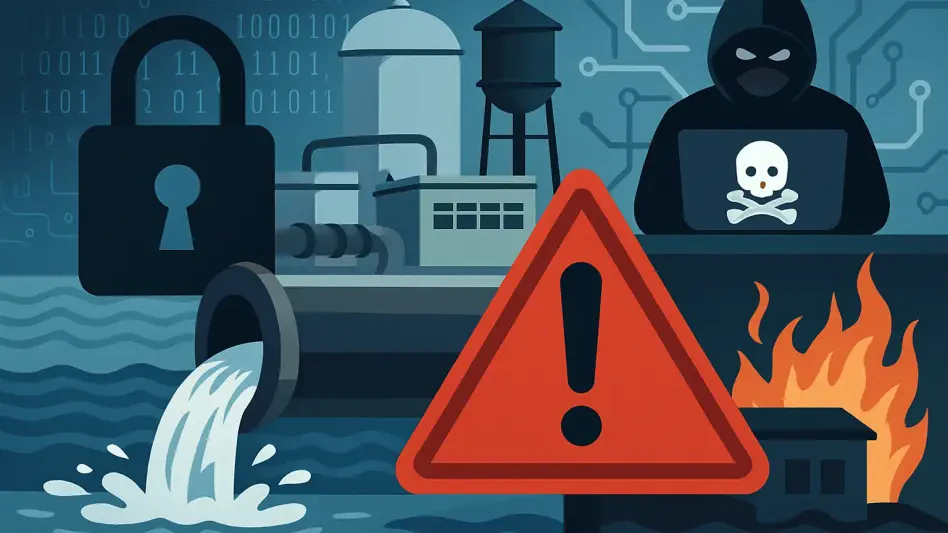New York has recently taken a significant step in cybersecurity by unveiling new regulations aimed at safeguarding water and wastewater systems against cyber threats. The state’s approach involves comprehensive measures designed to enhance the resilience of these critical infrastructures in the face of growing digital vulnerabilities. With the allocation of a $2.5 million grant program, the initiative seeks to equip water systems with the necessary cybersecurity protocols to deter potential cyberattacks and ensure uninterrupted service delivery. By focusing on precise risk assessments and deploying technical safeguards, New York sets a precedent for addressing the challenges facing essential community services in the digital era.
Strengthening Cyber Defenses
The cornerstone of New York’s initiative is the establishment of robust cybersecurity programs by regulated water and wastewater systems. These programs emphasize the importance of performing detailed risk assessments and deploying technical measures to prevent and respond to cyber incidents. As operations must remain undisrupted in the event of an attack, the regulations are set to cover community water systems servicing populations larger than 3,300, with added requirements placed on those catering to over 50,000 individuals. Among the entities affected by the new regulations, 318 are publicly owned water systems—37 of which supply water to populations exceeding 50,000.
Accompanying these regulations, the $2.5 million grant program offers financial aid to ease the burden of compliance. While aimed at covering costs like cybersecurity risk evaluations and additional compliance activities, state officials acknowledge the grant’s limitations, suggesting that ratepayers or taxpayers may shoulder some of the remaining expenses. By emphasizing the critical need for these measures, Governor Kathy Hochul underscores cybersecurity’s essential role in maintaining public health and community safety. Her administration actively empowers state agencies to hold organizations accountable for security breaches, aligning with broader efforts to protect various infrastructural sectors under her leadership.
Federal Alignment and Local Implementation
Aligning with federal guidance from agencies such as the Environmental Protection Agency (EPA) and the Cybersecurity and Infrastructure Security Agency (CISA), New York’s regulations aim to minimize redundant regulatory processes while enhancing coherence. This alignment with the national cybersecurity landscape promotes a unified approach across different levels of government, ultimately fostering stronger defenses. The urgency for such measures is heightened by an assessment from the New York State Comptroller, revealing a low level of cyber maturity in the water sector—a finding that resonates with similar national assessments by the EPA.
The regulation’s requirements vary according to the size of the communities served by water systems. Smaller systems serving populations between 3,300 and 50,000 are mandated to report cyber incidents to the Department of Health within 24 hours, conduct annual assessments of system vulnerabilities, and comply with a state-managed cybersecurity program. Additionally, these systems must create and test incident response plans, provide cybersecurity training for staff, and ensure certified operators undergo training for new certifications and renewals. Larger systems, which cater to populations above 50,000, face even more stringent requirements, including appointing an executive responsible for overseeing cybersecurity efforts, and monitoring network activity for signs of cyber threats.
The Financial Considerations
New York’s strategy acknowledges the financial implications of implementing these regulations, which are substantial for both small and large entities alike. Smaller systems may face costs reaching up to $150,000 annually, while larger systems could incur expenses as high as $5 million each year. Specific tasks such as cyber asset inventorying can amount to $25,000 for smaller entities and up to $135,000 for larger ones. Additionally, necessary logging systems for larger networks might add another $54,000 to their financial commitments.
In light of these costs, state officials continue to engage in discussions with local water authorities and national organizations, including the American Water Works Association and the NYS American Water Works Association. While there is general support for the new regulatory measures, concerns regarding the financial burden and increased workload for staff have been expressed. These dialogues demonstrate the state’s commitment to addressing stakeholder concerns while upholding public sector cybersecurity standards across New York’s communities.
Navigating Legal and Industrial Challenges
The introduction of these regulations occurs during a period of notable change in public sector cybersecurity, coinciding with nationwide efforts from prior administrations to enforce basic cybersecurity requirements on water entities. These efforts, however, encountered legal pushback from industry groups like the American Water Works Association and skepticism from Republican lawmakers, which delayed their implementation. Additionally, previous federal stances on state involvement with critical infrastructure highlight the complex landscape surrounding cybersecurity governance.
Despite potential legal challenges from the water industry, New York officials remain confident that their proposal complies with legislative expectations. Colin Ahern, New York’s chief cyber officer, ensured the public of the transparent rulemaking process, which involves collecting and incorporating public feedback. This method signals New York’s comprehensive approach to significantly enhancing cyber defenses for its water and wastewater systems, balancing regulatory compliance with stakeholder interests. Thus, New York envisions a secure environment where vital infrastructures withstand evolving cyber threats while continuing to serve the community safely.
Implications for Communities
New York has taken a major stride in enhancing cybersecurity by rolling out new guidelines meant to protect its water and wastewater systems from cyber threats. As cyberattacks become more frequent, these infrastructures are increasingly vulnerable, necessitating a proactive response. With this initiative, the state aims to boost the resilience of these critical systems against potential digital disruptions. To support this, a $2.5 million grant program has been introduced, which is crucial for equipping water systems with effective cybersecurity protocols. These protocols are designed to thwart potential cyberattacks, ensuring the steady supply of water services. The strategy focuses heavily on conducting thorough risk assessments and implementing technical defenses, positioning New York as a trailblazer in safeguarding vital community services in this digital age. The state’s efforts serve as a model for other regions, emphasizing the importance of thorough preparation in confronting the evolving challenges of cybersecurity in essential utilities.








